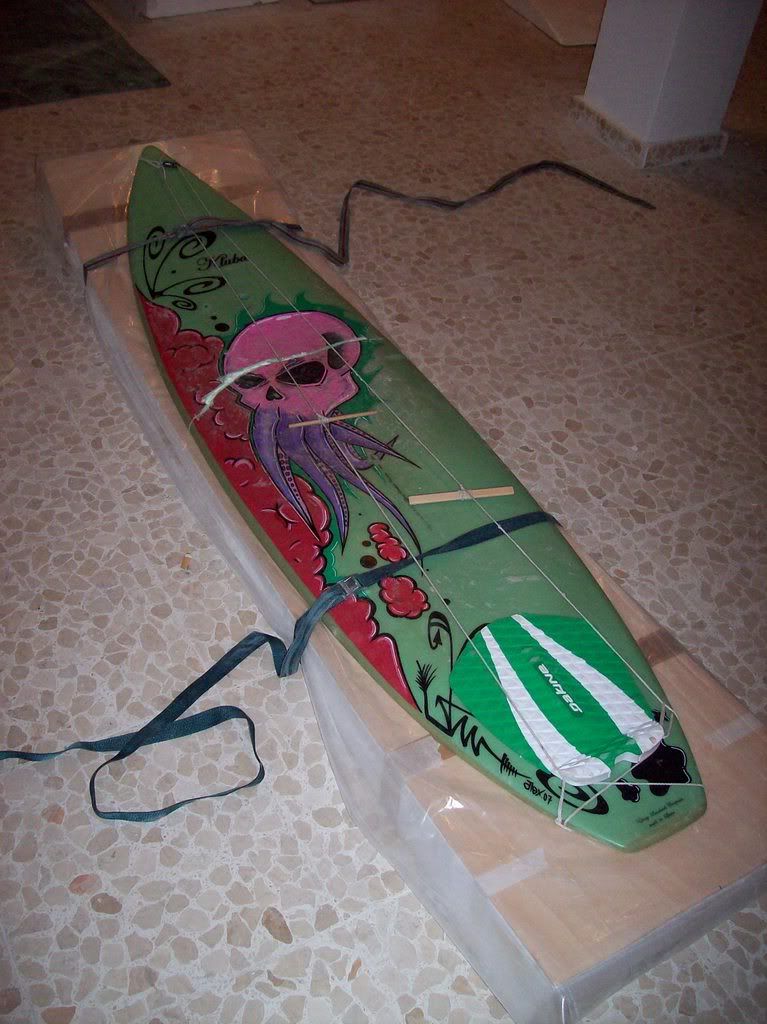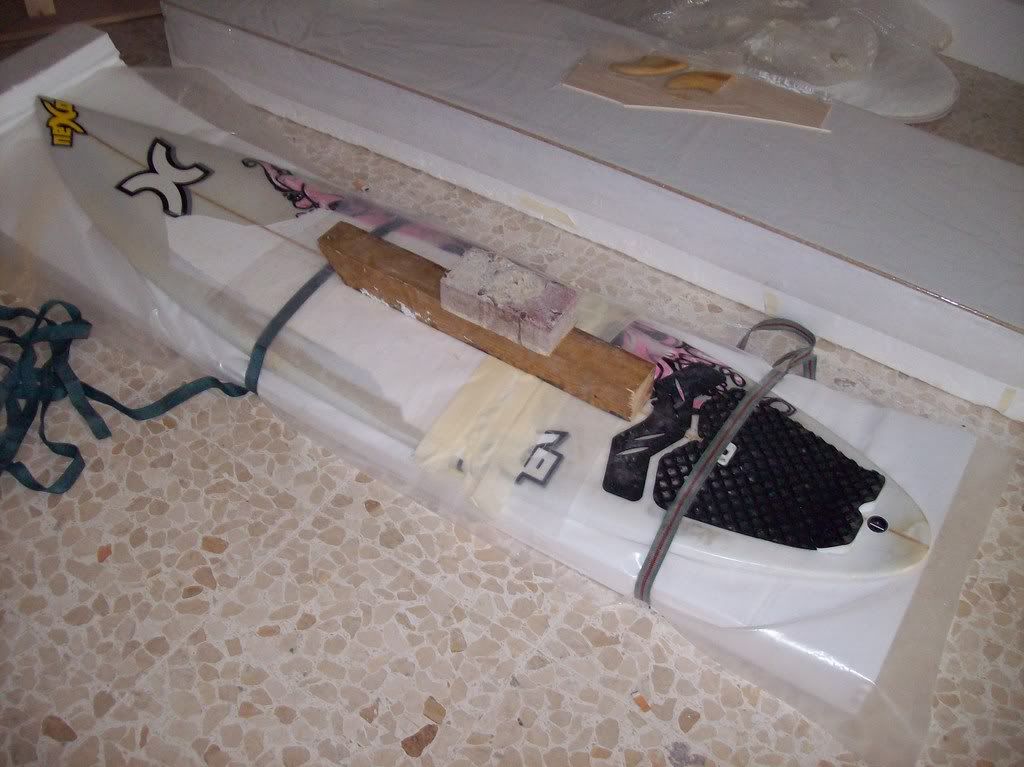Aloha Craftee
Sorry for the long delay. This has been a crazy winter for me. Way to busy with too many side projects etc. and not enough time in my factory.
But things are looking up and hopefully April will allow me more time to interact with you guys and get some surfboard stuff done around here.
From the “Necessity being the mother of invention” files…
Primarily surfing places like Pipeline and Seaside Point (huge rocks, big waves, close to the beach) will take a huge toll on ones personal quiver! Consequentially, I have personaily repaired dozens of broken boards over the years, most of them my own!
When I had ProGlass running, in addition to glassing about 100 boards per week, we also did ding repairs. I had a room set up specifically for doing only ding repairs. At one point I had 3 ding repairmen working.
In my building, I have a large 20’ x 20’ receiving area with a large sliding door. The pile of broken boards that were continuously dumped in this area was about 3-4 feet deep and 10’ in diameter. We finally had to start taping the halves together because it became too hard to quickly figure out which noses went with which tails because so many boards are so similar.
I can’t even begin to guess at how many broken boards I have fixed or overseen the repair of. Surely hundreds, maybe thousands.
The first thing that I will get to when I begin working on that board again will be my “rocker adjusting technique”.
As to stringers… they are not very consequential to the strength of the finished repair. It is all about how you lay up the glass on each side. I will eventuall get back to finishing that sample board so you can see how I do it. If done right the board will never break at the same place again, even in spite of the stringer not being overlapped, fused or rejoined in some way. It just isn’t an issue really.
The stresses, as you know, are almost exclusively distributed through the “shell” in a composite structure. The stringer is primarly there to keep the 2 sides of the shell separated. Traditional stringers are highly overrated and missunderstood by most. Most think of them like they would a floor joist or rafter. Rather than a filler for the space between the sides of the shell.
Stringers are, of course, also there to retain the rocker when shaping. And while that is a big help, blanks will still sag, twist and otherwise move around so you can’t count on any absolutes. You have to keep checking at all steps if you want precise outcomes.
Hope this helps, more soon…


